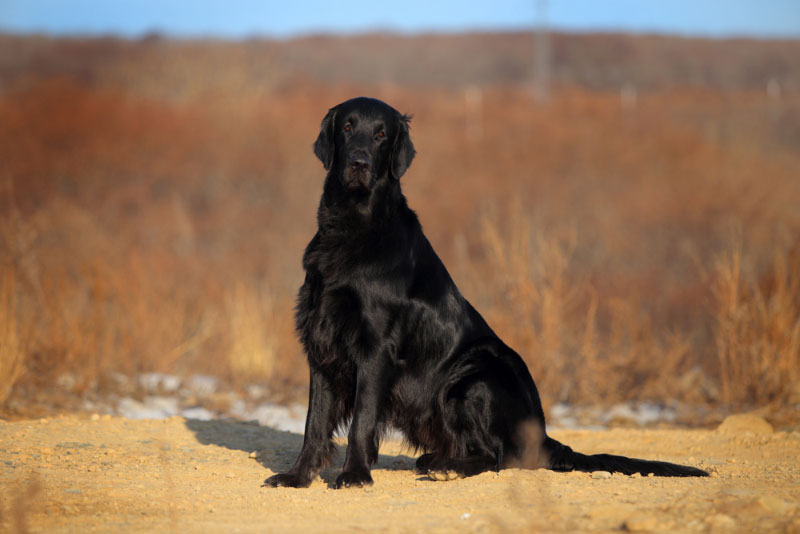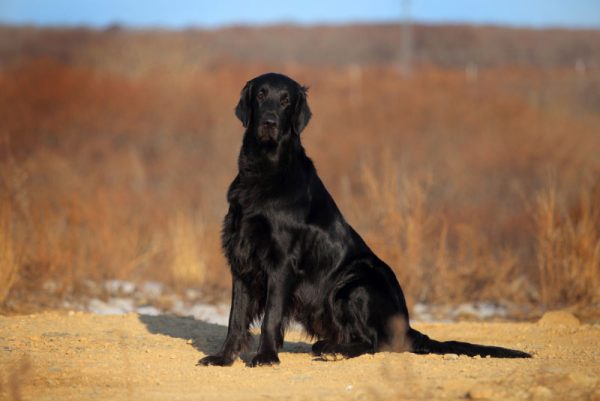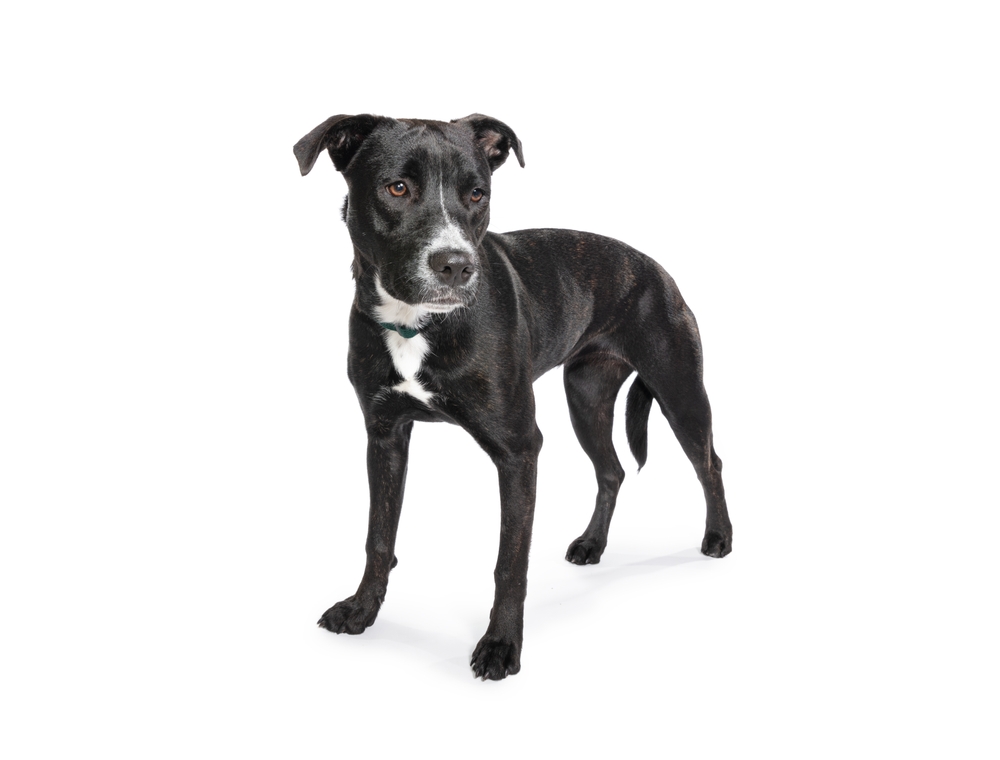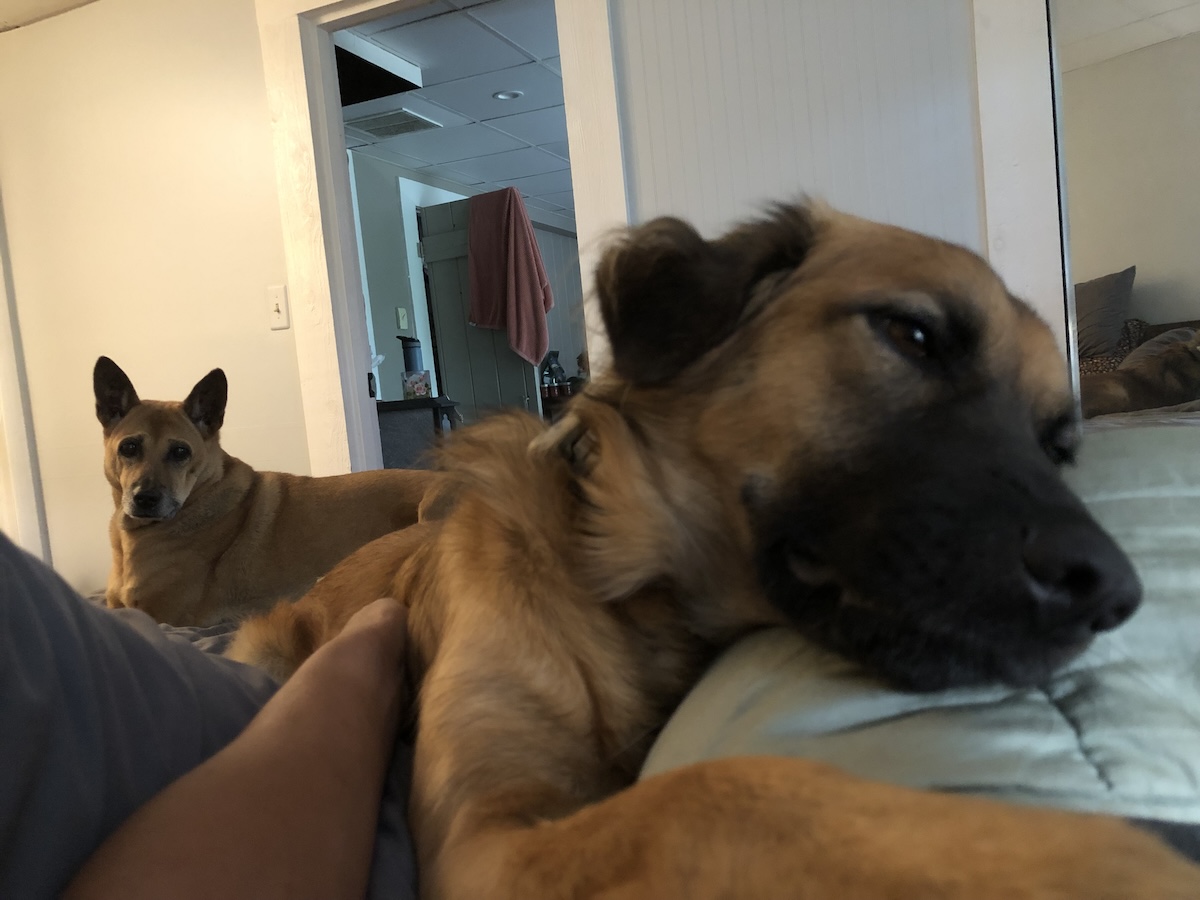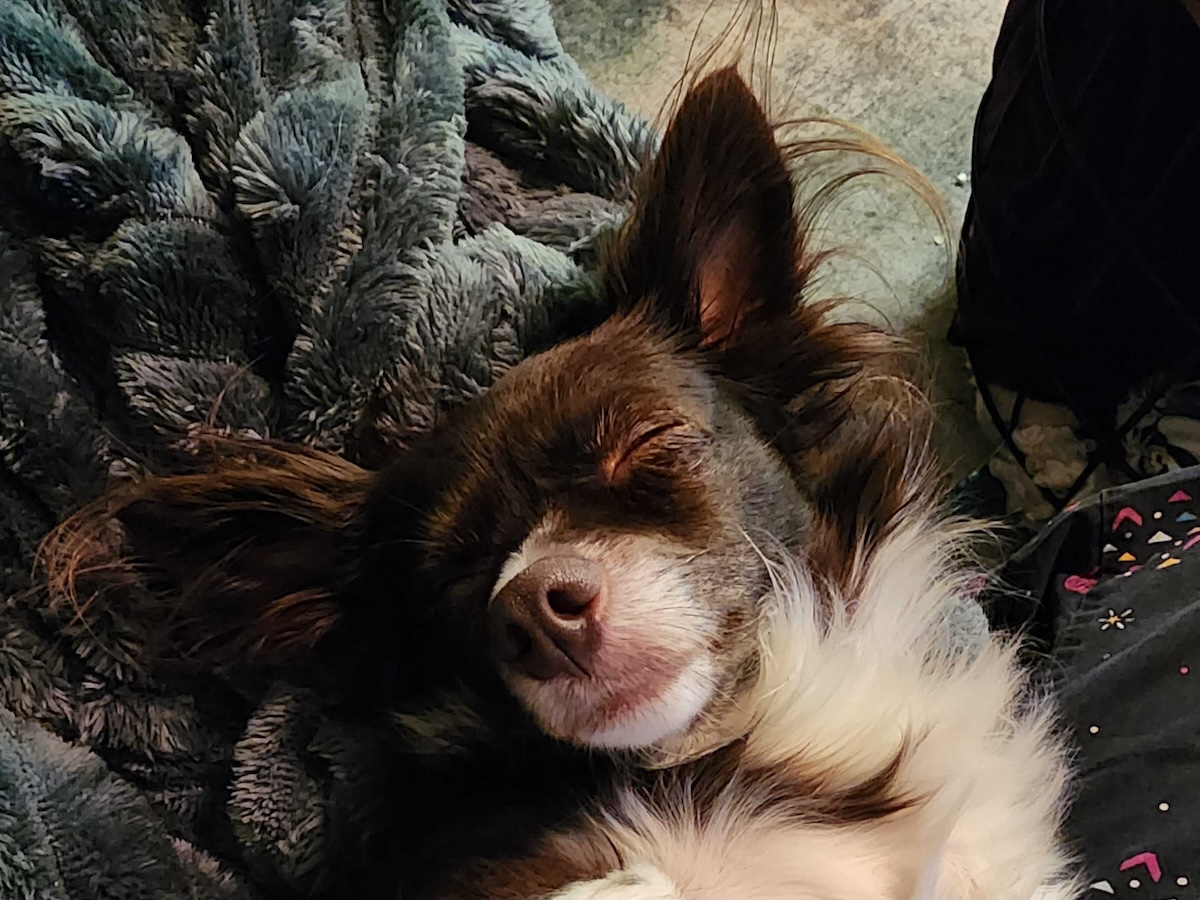Click Below to Skip Ahead
The Flat-Coated Retriever is a unique breed with a long head and a black or liver flat-lying coat. These large and friendly dogs get along well with practically everyone. If you are thinking about getting one of these dogs for your home, read on for a discussion of their common health issues, grooming and exercise needs, intelligence, and temperament.
Breed Overview
Height:
22–25 inches
Weight:
60–70 pounds
Lifespan:
8–10 years
Colors:
Black, liver, yellow
Suitable for:
Active families, new dog owners
Temperament:
Happy, playful, friendly
The Flat-Coated Retriever is a long-standing breed that first appeared in the 19th century, as breeders wanted an easy-to-train dog that was also friendly. This breed has a sleek coat that is usually black but can also be liver or even yellow and a long head that makes them stand out from other retrievers. They are large dogs that love to be around their human companions, and they have a temperament that many people describe as exuberant, optimistic, and eager to please.
Flat-Coated Retriever Characteristics
Flat-Coated Retriever Puppies
Flat Coated Retriever puppies already have the friendly, playful personalities that make them popular as adults. They will constantly seek out companionship and will spend plenty of time exploring their environment, so you will need to ensure that your home is puppy-proofed to keep them out of trouble and out of danger.
You will also want to let your puppy spend plenty of time with other people and animals to help them be more outgoing as adults. It’s also a good idea to visit as many locations as possible, which will help them feel more comfortable in strange places as adults. Setting up their training and grooming routines is also essential while they are still puppies.
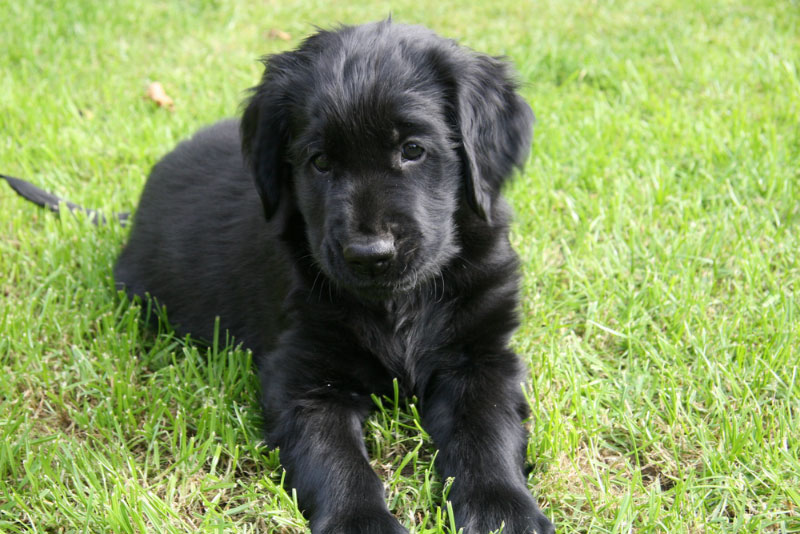
Temperament & Intelligence of the Flat-Coated Retriever 🧠
The Flat-Coated Retriever is one of the friendliest dogs that you will meet. They are continuously happy and optimistic, which makes them seem forever young, and they enjoy being around people, often staying within a few feet of a family member when not on a job. They have plenty of energy and love water, so they make great companions for people who like to spend time outdoors. However, they also don’t mind lounging around or cuddling on the couch while watching a football game or movie.
The Flat-Coated Retriever is incredibly intelligent and capable of learning a wide variety of commands and completing complex tasks. They are easy to train, even for beginners, because they maintain a constant eager-to-please and optimistic attitude well into their senior years.
Are These Dogs Good for Families? 🏡
The Flat-Coated Retriever is a great choice for a family because of their extremely friendly temperament and positive attitude, which makes them a joy to be around. They get along well with children and even strangers, so all of your friends will be stopping by to see them. They are easy to train, so they are a good choice as a first pet, and they are quite adaptable to different living environments if you move frequently. The only downsides to having one of these dogs are that they are a bit big, so they are not a good choice for small apartments, and that due to their fondness of people, they aren’t ideal as a watchdog.
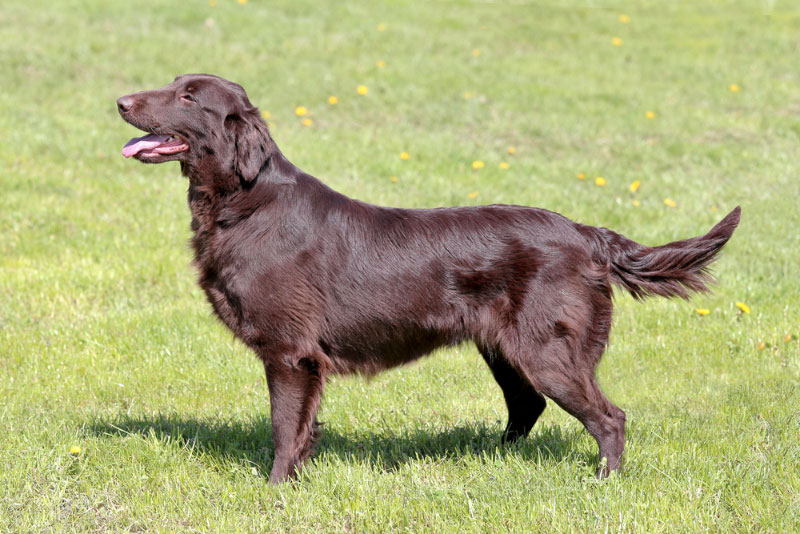
Does This Breed Get Along With Other Pets? 🐶 😽
The Flat-Coated Retriever often gets along with other pets quite well, especially other dogs, whom they tend to make fast friends with due to their friendly and playful temperament. They can even get along well with cats and other animals, especially if they spend time with them while they are still puppies. However, how well your dog gets along with other animals will depend on their unique personality, and some will have an instinct to chase smaller animals due to their retriever heritage.
Things to Know When Owning a Flat-Coated Retriever
Food & Diet Requirements 🦴
Your Flat-Coated Retriever will require high-quality dog food appropriate for their age and health that has real meat like chicken or turkey listed as the first ingredient, as this will be the most nutritious. Follow the portioning advice on the package carefully, as that’s the easiest way to avoid unwanted weight gain, which affects many dogs in the United States and can lead to several health problems, including diabetes and cardiovascular issues. If you are not sure about the proper food to feed your dog, talk it over with your veterinarian, who can provide advice specifically for your pet.
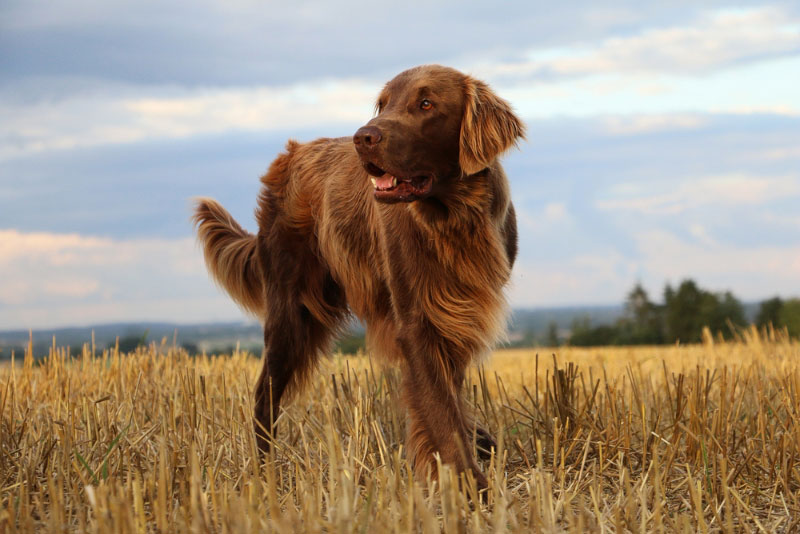
Exercise 🐕
The Flat-Coated Retriever is an energetic dog that needs regular exercise to stay healthy and happy. They should have at least 1–1.5 hours of vigorous activity per day, which you can break up into two or more sessions to help make it easier to achieve, along with having other family members who can pitch in. Long walks, games that include running like Frisbee and fetch, and swimming, which is one of their favorite things to do, are great ways that you can help your pet get the activity that they need.
Training 🦮
Training your Flat-Coated Retriever should be relatively easy, especially compared to many other breeds. These dogs are eager to please and will work hard to figure out what you want from them and do it. They are also intelligent and learn quickly, so training will be a great experience for you both. Begin holding your sessions while they are still a puppy to help get them into a routine, and do them after playtime to help keep them focused. Always use plenty of positive reinforcement, which includes treats, praise, and pets, to let them know that they are doing a good job, and never get angry or frustrated with them, as that can cause them not to want to participate in the sessions out of fear of disappointing you.
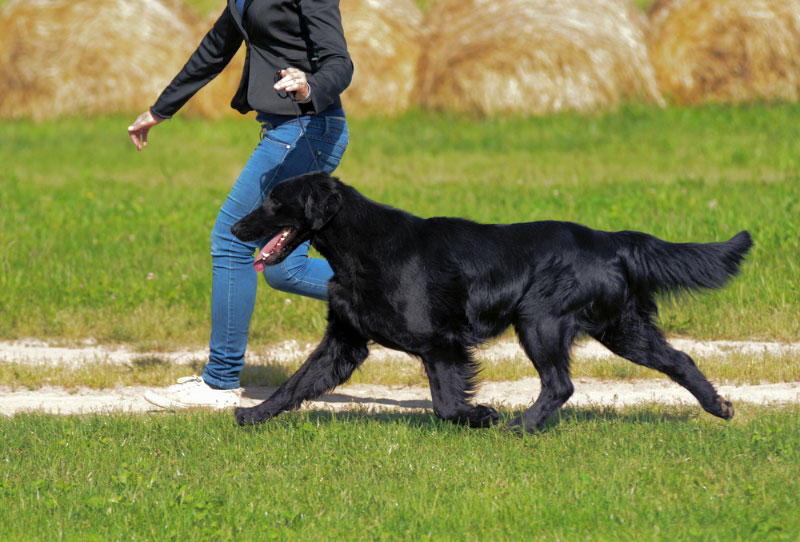
Grooming ✂️
The Flat-Coated Retriever has an easy coat to maintain that only requires brushing every few days to help spread their natural oils and remove loose hair. They don’t shed or drool much and only require an occasional bath with a high-quality shampoo to keep them looking their best. They will also need a nail trimming if you hear them clicking on the floor, and you will need to check their ears regularly for signs of infection or infestation and clean them as required. You will also need to brush their teeth as often as possible with a dog-safe toothpaste to help prevent dental issues, which affect many dogs.
Health and Conditions ❤️
- Progressive retinal atrophy
- Ear infections
- Histiocytic sarcoma
- Hip dysplasia
- Bloat
Male vs. Female
Male Flat-Coated Retrievers are usually about an inch taller than the females and will usually be 5–10 pounds heavier. The males also tend to be friendlier and playful, while the females tend to be more independent, which also makes them easier to train.
3 Little-Known Facts About the Flat-Coated Retriever
1. Slow Maturation
Flat-Coated Retrievers mature more slowly than other breeds and can stay “puppies” for 3–4 years.
2. Usage in War
Flat-Coated Retrievers helped transmit messages, find lost soldiers, and detect mines during World War I and World War II.
3. Nearly Went Extinct
The Flat-Coated Retriever experienced a significant decline in numbers around the time of World War II, nearly leading to the breed’s extinction. Fortunately, breed enthusiasts were able to bring them back after the war.
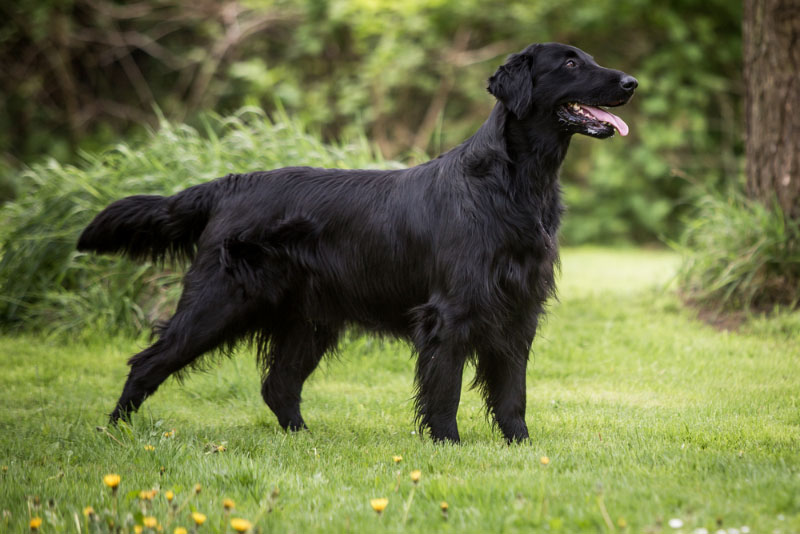
Final Thoughts
While other retriever breeds, like the Labrador Retriever and Golden Retriever, are more popular in the United States, the Flat-Coated Retriever can make a wonderful addition to any home. They are extremely friendly and enjoy being around family members. They get along well with children and other pets and are easy to maintain, only requiring brushing every few days. Their high energy requires a great deal of exercise, so they are better suited to a multi-member family, but they can be a wonderful companion for a single person who likes to spend time outdoors.
Featured Image Credit to: Stupina Kseniia, Shutterstock

